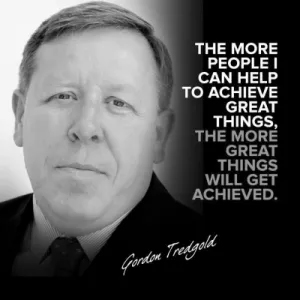
If you want to get ahead, get recognised and be promoted, then one of the number one things you can do, is to become known as someone who brings solutions to your boss rather than problems.
Now I accept that you may not be able to solve every problem, but I do think that many people often delegate problem-solving to their bosses, maybe even thinking they get paid more than me so they should solve it.
Bosses usually have a lot on their plate and when you bring a problem you’re just adding more to it, which is not going to make you stand out in a positive way.
A much better approach is to be known as someone who can relieve some of the burden, someone who can be relied on to get the job done without too much support.
I am reminded of this as I was coaching a client yesterday and they were explaining to me that they found themselves in a situation where their boss had asked them to do something very complex and they were not sure if it were possible, and they were asking me the best way to let their boss know it was not possible.
I said ‘ok, I hear that you believe it’s not possible, but if it were, what would you need to make it possible?’.
My client thought about it, and then said, ‘Well we have two options, we need to add two more staff or extend the deadline by a week’.
I said ‘ok, of those two solutions which one would be most acceptable’. And my client said,’ Adding two staff, as we really need to meet the deadline on this’.
Then I asked, ‘Do you know which two staff you need’, and he said ‘Yes‘.
Just by thinking it through and taking a what do I need approach, we now have a potential solution.
Any boss will be happier to have someone come and say ‘Look to get this done we just need to add two more staff, and these are who I need‘ as opposed to ‘This cannot be done’.
In the first instance, it shows a positive can-do attitude which is always a good thing, and secondly, you’re proposing a potential solution. The boss might not like it, but at least they have something to work with, they have the decision to make, rather than the alternative which is to start looking to solve the problem themselves.
Also, it’s more likely that you are in a better position to come up with a solution than they are, as you are closer to it.
I remember I worked for one boss, and I went to him with what I thought was a big problem, and he just said to me ‘What do you think we should do?’ I thought for a moment and then proposed a solution and he said ‘ok, let’s do it’.
Then a few days later I went to him with another problem, and he listened and then said ‘What do you suggest?‘, again I told him what I thought we should do and he said ‘ok let’s do it’.
Then about a week later I went to see him again and he said ‘Hey how can I help?’
And I said, ‘Well, we have an issue. But I think you’re just going to ask me what we should do, then you’re going to just tell me, ok go do it?
He smiled and said, ‘You’re right, the only thing that surprises me is that it took you this long to figure that out. You know your job as well as I do, and you’re smart. Just keep me informed’.
That experience made me think that, before I go to the boss with a problem, I should ask myself all the questions that they would ask me so that if there is something that we could do I should be presenting it as a solution, rather than presenting a problem. Especially when it’s one I will probably end up solving anyway.
Sometimes we place limits on what we think is possible, in these situations, we should always ask ourselves what would we do if money and resources were unlimited. This put us into solution mode rather than limiting what we think is possible.
When we take this approach and bring solutions, or potential solutions, rather than problems it put us in a completely different light, we look like we’re solution orientated rather than problem-orientated.
This makes us a much more valuable resource, one that will be considered for better opportunities and also for promotion.
If you want to learn more about creating highly engaged teams or being a better leader click the link to view our course.
